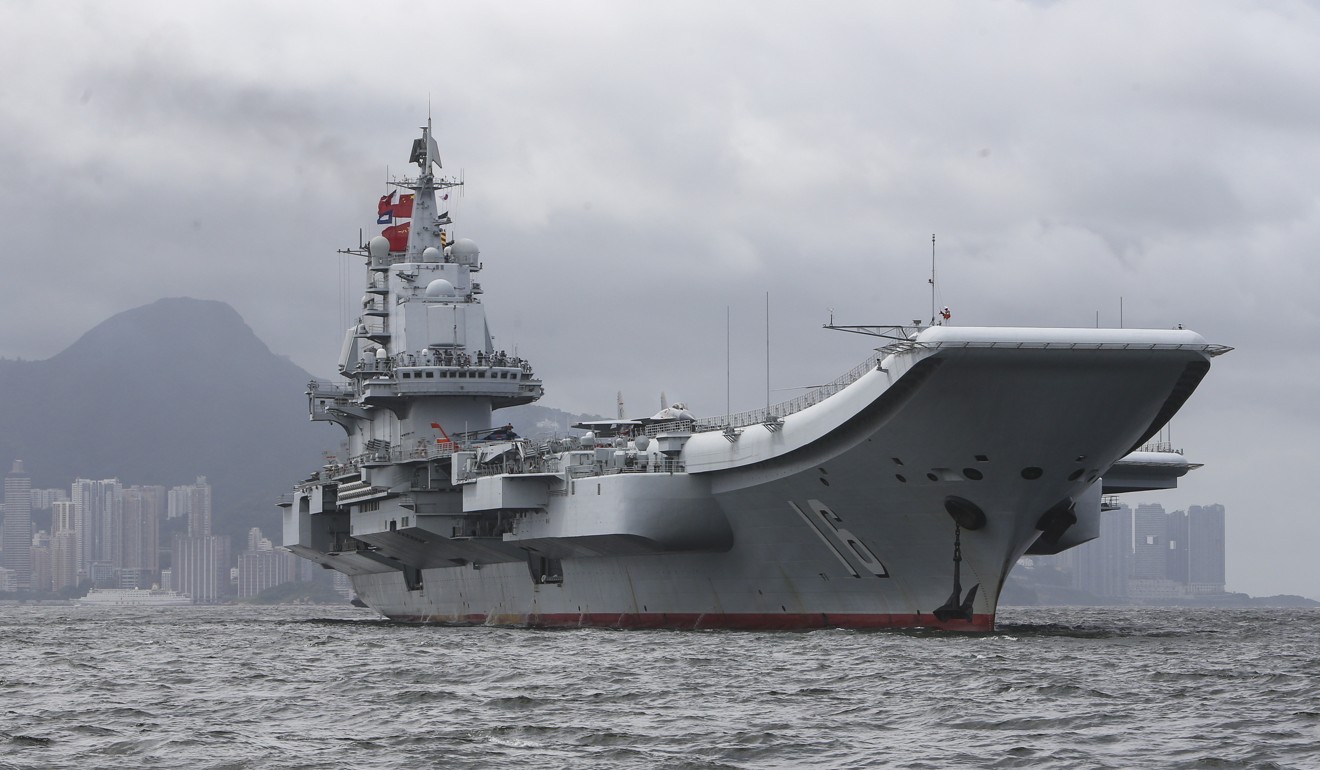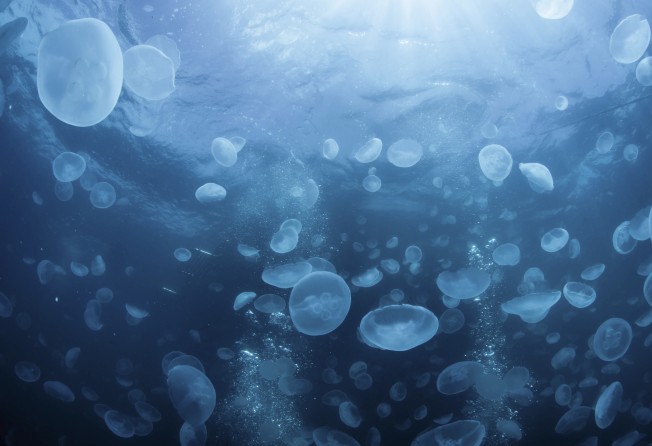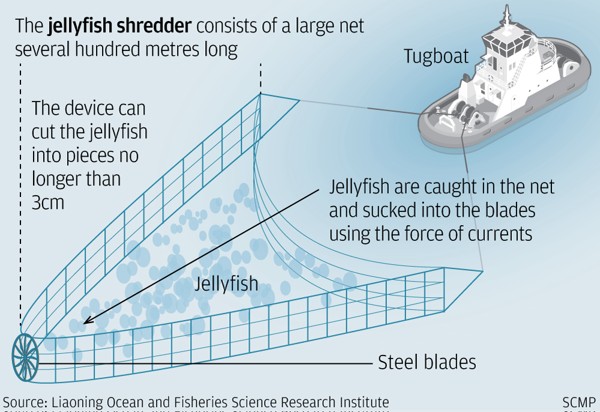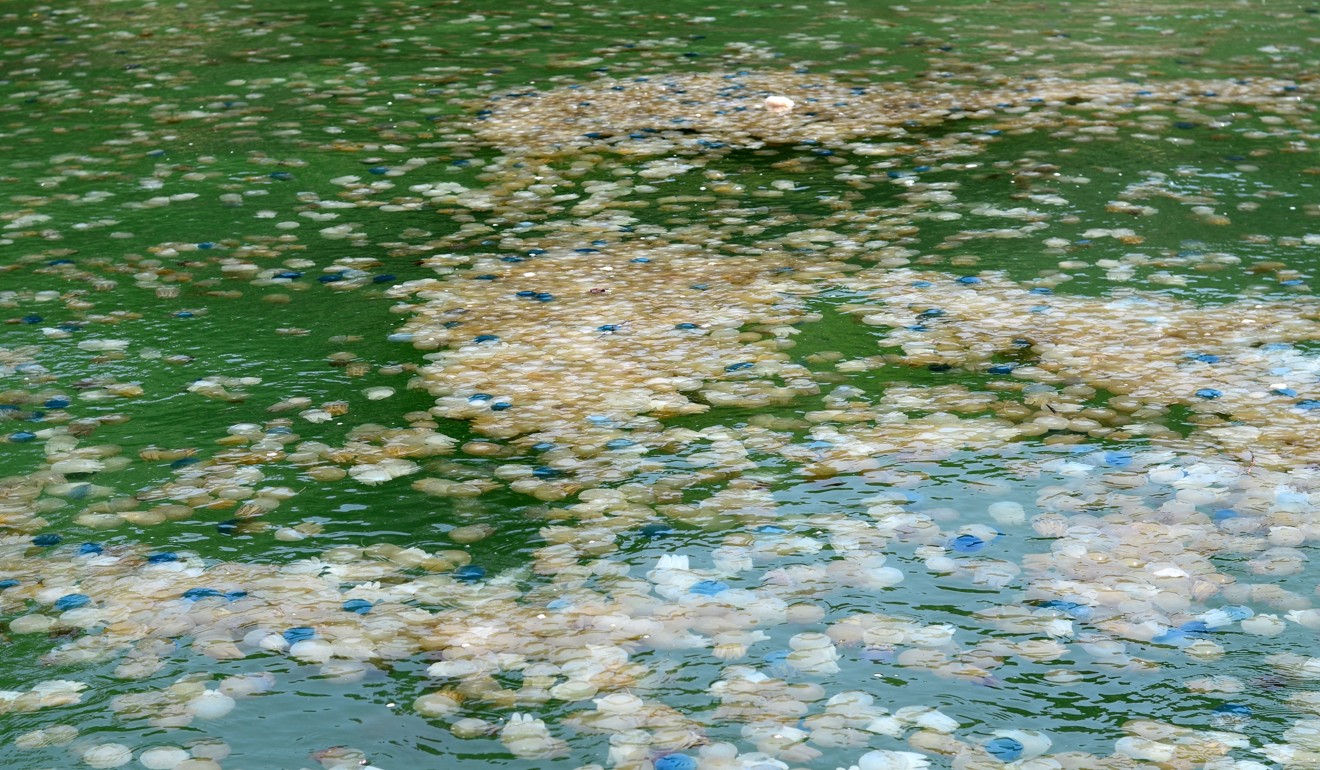
Why the humble jellyfish could stop China’s aircraft carriers in their tracks
Scientists testing ‘jellyfish shredder’ to reduce risk of their systems becoming clogged up by animals sucked into their pipes

China is testing a new weapon to counter a major threat to aircraft carriers: jellyfish.
Dubbed the “jellyfish shredder”, the instrument can clear a passage in water infested by jellyfish to give the carrier crew “peace of mind”, according to a scientist involved in recent field tests.
The researcher, from the Liaoning Ocean and Fisheries Science Research Institute based in Dalian, northeast China, requested not to be named due to the sensitivity of the issue.
Tan Yehui, a researcher with the South China Sea Institute of Oceanology at the Chinese Academy of Sciences in Guangzhou, said jellyfish posed a serious threat to aircraft carriers given the size and complexity of the warships.
A large number of the invertebrates can get sucked into a ship’s water intake mouth and clog up the cooling system. This in turn can cause the carrier’s engines to overheat, bringing them to a halt.
It can take hours, or even days, to remove the sticky remains of the jellyfish from filters and pipes.
China’s first aircraft carrier the Liaoning – originally a Soviet vessel – was rebuilt in Dalian.
It is believed three more carriers are under construction at the strategic port in Bohai Bay, as China rapidly expands its naval power to protect its business and political interests around the globe.
Although warships already have measures in place to combat the jellyfish threat, encountering large numbers of them at once can still cause problems.
In 2006, America’s nuclear-powered supercarrier USS Ronald Reagan was temporarily disabled after running into a swarm of jellyfish in the waters outside the Australian port of Brisbane.

The jellyfish shredder takes the form of a large net several hundred metres long with a cluster of sharp steel blades in the middle.
The net is towed by a boat travelling at high speeds, using the force of the rapid currents to suck the jellyfish into the blades.
According to a paper published by the project team in the journal Hebei Fisheries in August, the device cuts the jellyfish into small pieces no longer than 3cm – about a tenth of the size of an adult jellyfish commonly seen in Chinese waters.
The waters become murky about a day after the operation as the fragmented corpses start to decompose.
Organic pollutants – measured by oxygen levels – peak four days after the operation, but the waters clear after a week when the remnants have completely dissolved, according to the team’s experiments.

However, the researchers warned that the method could cause environmental problems.
The severed tentacles, for instance, can be washed onto beaches and risk stinging bathers.
Skin contact with jellyfish venom can cause intense pain, inflammation or even death.
If the shredder catches pregnant jellyfish it could also release a mass of fertilised eggs, which would produce more outbreaks in the next season.
The Dalian team also tested other methods to reduce jellyfish numbers. In one experiment they pumped air into the ocean to create a large number of bubbles, which lift the jellyfish to the surface where they can be killed with pesticides.

However, Tan questioned the effectiveness of these methods, saying the shredder could only catch relatively large jellyfish.
In recent years many outbreaks in China’s coastal waters have been caused by smaller species with an average length of no more than 2cm.
Tan also warned that both shredding and pesticides would kill other marine creatures, a point conceded by the testing team.
She said the aircraft carrier fleet should consider setting up a jellyfish forecast system to plan their operations in the interval between outbreaks.
China and many other countries have recorded jellyfish outbreaks of an unprecedented scale and frequency in recent decades.
Swarms of the creatures have caused beaches to shut down, caused salmon stocks to disappear and, echoing the problems they pose to aircraft carriers, clogged up nuclear power plants.
While the reasons for these outbreaks vary, many marine biologists believe that rising sea temperatures caused by global climate change have provided warm beds that aid jellyfish reproduction.
“The outbreak often occurs in waters with the right temperature and salinity. These elements should be monitored, predicted and avoided by naval operations,” Tan said.
There are other factors that may exacerbate the problem in Chinese waters.
One researcher at the Institute of Oceanology in Qingdao argued the pollution in the seas around China were providing food to microorganisms such as algae, which in turn has led to an increase in the number of jellyfish that prey on them.
But some researchers, including Tan, argue that jellyfish cannot survive in heavily polluted waters.
Instead they blame overfishing, which has led to a reduction, or even the extinction, of species that prey on jellyfish.